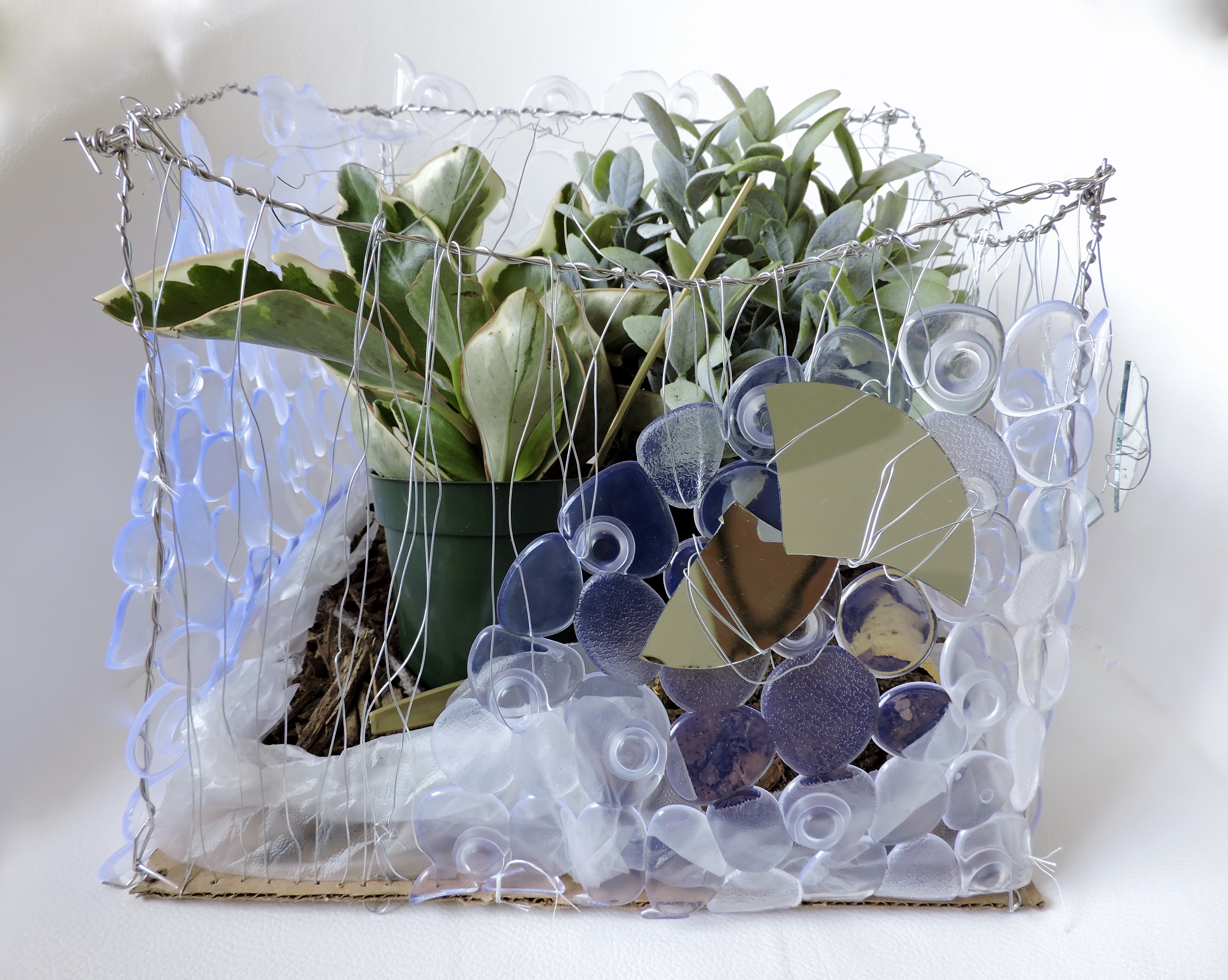It is always hard to judge one’s own work, specially after having lived the process of creation from beginning to end. It is true, however, that it allows oneself to compare expectations to reality, and evaluate whether the result was the one desired or not. In my case, I had to face several difficulties which enabled me to achieve the desired outcome.
I must admit I feel some kind of disappointment with the piece. When comparing my initial idea to the final outcome, there is a big difference between them. To me, the sculpture – as Professor Ayoung said- has too much noise. In other words, there seems to be too much brightness, light and texture at the same time. I believe this is a result of the combination between plastic and wire in the sculpture’s structure. Initially, the piece was meant to be covered in plastic. However, due to the material’s softness, it was impossible to attach it to the sculpture in a rigid way. This prevented it from looking more aesthetically pleasant. On the other hand, I believe the sculpture’s narrative – which I will reveal in the following paragraphs – sent a strong and powerful message that could have been utterly improved if I had managed to further develop its aesthetics.
After reading Basic Observations, there were some quotes with which I decided to work. Firstly, and despite the fact of just being applied to architecture, I was highly attracted by. For this reason, my sculpture began to shape its structure and narrative according to Parson’s space and philosophy, mostly focused on sustainable, modern and simplistic design.
In terms of narrative, I pursuited to create a sculpture based on the human interaction with nature and sustainability.
We define a box as an object made out of a hard material that keeps the inside away from the outside. The Pandora’s box represents one of the most famous and important objects in the Greek mythology. Taken from the myth of the Pandora’s creation in Hesiod’s works and days, the box contained all the evils of the world.
In this project I have attempted to imitate this mentioned object in the modern context. Nowadays, nature is the most precious treasure we possess, and it has rested untouched – up until today – inside our own Pandora box. But something which is supposed to be hard, such as the box, no longer is so. Our box is fragile and transparent. This is so, that we have managed to break it, invading the only space that had to remain untouchable: nature.
As a result from the above, the materials used attempted to portray the mentioned fragility of the box where nature relies. The idea behind its form relies on one of Basic Observations’ main focus: the idea of toughness vs. slackness, and the contrast between objects that are meant to be hard but – on the contrary – they are not. As it has already been mentioned, one of the greatest juxtapositions within the sculpture relies on the box’s real fragility versus its expected firmness. For this reason, I chose plastic and wire as the main mediums. Despite the fact that they can sustain and protect an environment, they are also vulnerable to any external forces
greater than them: the human being. To represent nature and its destruction, I used plants and earth as the content of the box. These were covered with light bulbs and plastic snappers to portray the human pollution and creation that characterizes the XXIst century. On another note, the box was left transparent as a metaphor for the viewer to contemplate its own destruction. This is moreover highlighted by the use of mirrors on the sides where the box seems more destroyed. In other words, the sculpture aims to connect with the viewer who, while appreciating nature’s destruction, he can contemplate at himself and realize that we are the ones responsible.



